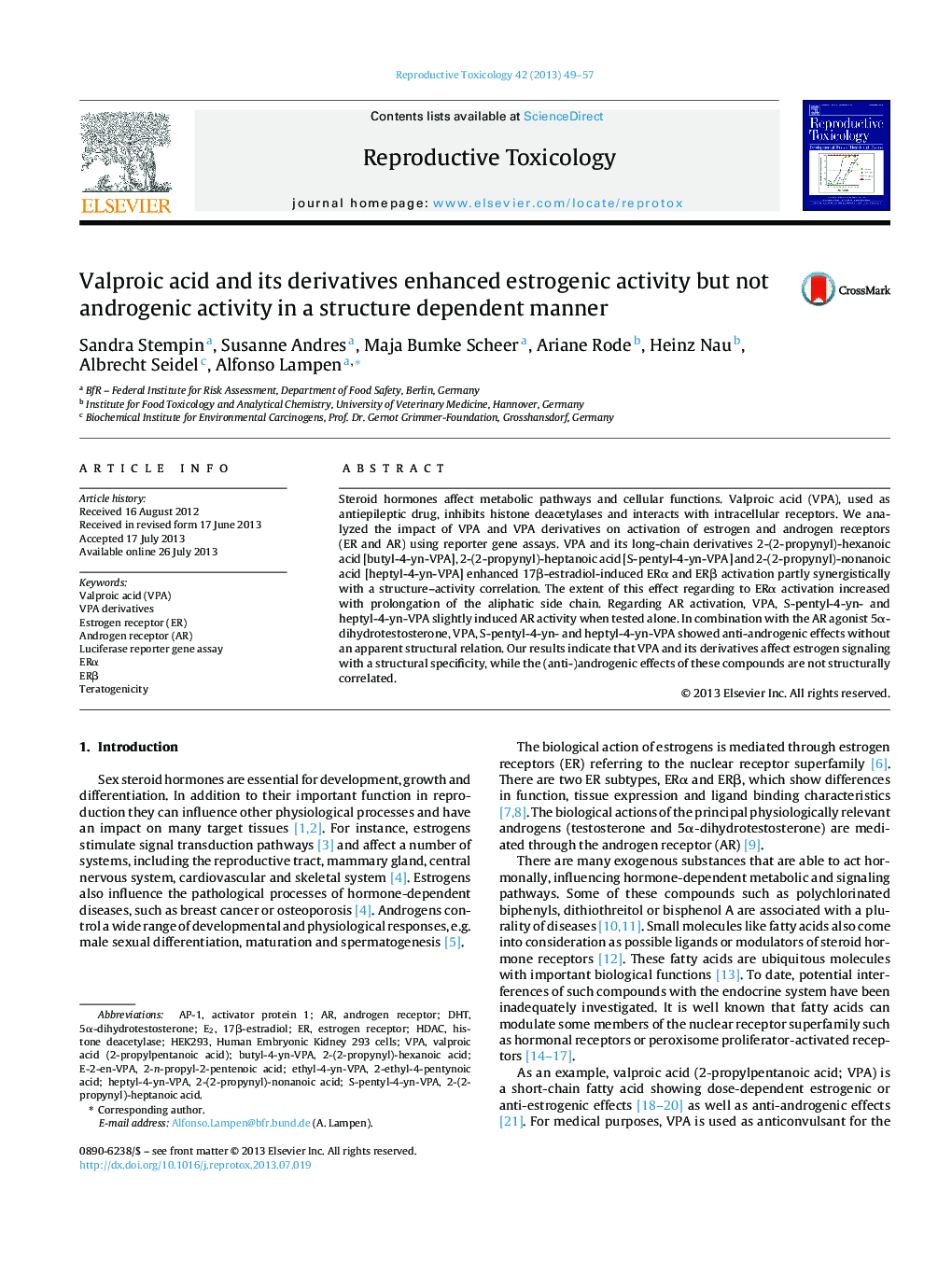| Article ID | Journal | Published Year | Pages | File Type |
|---|---|---|---|---|
| 5858530 | Reproductive Toxicology | 2013 | 9 Pages |
Steroid hormones affect metabolic pathways and cellular functions. Valproic acid (VPA), used as antiepileptic drug, inhibits histone deacetylases and interacts with intracellular receptors. We analyzed the impact of VPA and VPA derivatives on activation of estrogen and androgen receptors (ER and AR) using reporter gene assays. VPA and its long-chain derivatives 2-(2-propynyl)-hexanoic acid [butyl-4-yn-VPA], 2-(2-propynyl)-heptanoic acid [S-pentyl-4-yn-VPA] and 2-(2-propynyl)-nonanoic acid [heptyl-4-yn-VPA] enhanced 17β-estradiol-induced ERα and ERβ activation partly synergistically with a structure-activity correlation. The extent of this effect regarding to ERα activation increased with prolongation of the aliphatic side chain. Regarding AR activation, VPA, S-pentyl-4-yn- and heptyl-4-yn-VPA slightly induced AR activity when tested alone. In combination with the AR agonist 5α-dihydrotestosterone, VPA, S-pentyl-4-yn- and heptyl-4-yn-VPA showed anti-androgenic effects without an apparent structural relation. Our results indicate that VPA and its derivatives affect estrogen signaling with a structural specificity, while the (anti-)androgenic effects of these compounds are not structurally correlated.
